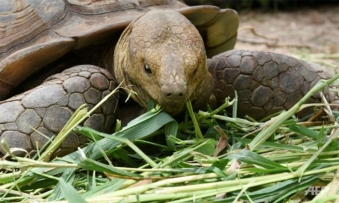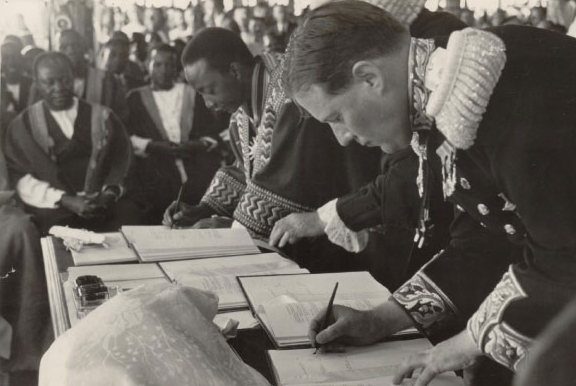The meeting comes in the wake of a series of stories published by Saturday and Sunday Vision indicating that the fate of over 24 Rhinos at the Zziwa Rhino ranch sanctuary in Nakitooma village in Nakasongola district appears to hang in balance following a rift between Captain Roy, the owner of the ranch and RFU.
The sanctuary initially a ranch, is owned by Captain Roy, however, he accuses RFU of trying to drum up public support and sympathy in order to blackmail him and grab his land.
In a meeting organised by the Nakasongola District Vice Chairman Samuel Tingira, and attended by four district executive members who included Bernard Kamoga (Secretary for health and Production), Fred Kempaka, Betty Namukwaya (Secretary Finance and Administration), Bernard Lwanga (Deputy Speaker Nakasongola Local District Council), Capt. Roy narrated to the team his initial idea of re-introduction and breeding of Rhinos in Uganda and how the idea has now been hijacked by Angie.
“I met a lady who was called Yvonne Verkaik at the Ngamba island chimpanzee sanctuary located on Lake Victoria and she convinced me to start venturing into Rhino Conservation. By that time, she was working closely with Sudhir Ruparelia and Apollo Hotel (now Sheraton hotel) and they had introduced two Rhinos at the Entebbe Zoo,” Roy said.
Captain Roy said, he voluntarily offered his 16,000 hectares of land for the conservation of Rhinos and opted to purchase another piece of land where he shifted all his cattle.
He also noted that he used his own plane to transfer some of the Rhino’s that were donated from the US and brought others from Kenya including setting up the entire infrastructure which included digging up boreholes and securing donations to set up a fence.
The district Councilors told Roy and his delegation who included his lawyers from Omongole and Company Advocates how RFU led by Angie had convinced them that he wanted to kick them out his land.
“We have met and heard her side of the story but we had never had your side. She told us that you wanted to evict them and as a district were concerned because we didn’t not want to miss out on such a big project," Kamoga said.
Roy assured the councilors that his initial plan was to transform the Zziwa Rhino sanctuary into a private game reserve and that the Rhinos would stay and that they had been granted permission to introduce other animals at the ranch by the Uganda Wildlife Authority.
He also noted that his woes with Angie came as a result of her decision to throw him and other local Ugandans who started the project out of the board.
“We were not consulted and yet it was us who recruited her into the RFU Board,” Roy said.
Captain Roy told the district Councilors how the board was being operated while they were members and also noted that they had recruited four board members before they hired Johan Genade who was the husband to Angie.
“When we hired him in the 2008, he told us he had a wife who was running a supermarket and wanted her at the ranch. We had no problem with that and allowed him to bring his family to stay on the ranch to run the RFU,” Roy told the councilors.
He told the councilors that in 2010, tourists who were visiting the facility to see the Rhinos increased and those who offered to spend a night used his own house.
“It was then that Genade approached me as owner of the ranch together with his company D&D International in 2010. We entered into a concession agreement with the company to operate a lodge. When the late Genade passed on, we recruited his wife as Executive Director, but she went ahead and created another company Amuka Lodges and todate I have never received a single coin from them,” Roy noted.
Captain Roy’s told councilors that besides being thrown off the board, he had been denied access to the ranch including his own homestead which he had built and that the RFU is using police who are illegally deployed and that even though they have brought the matter to the attention of the director of operation in the Uganda Police force, no action has been taken.




















